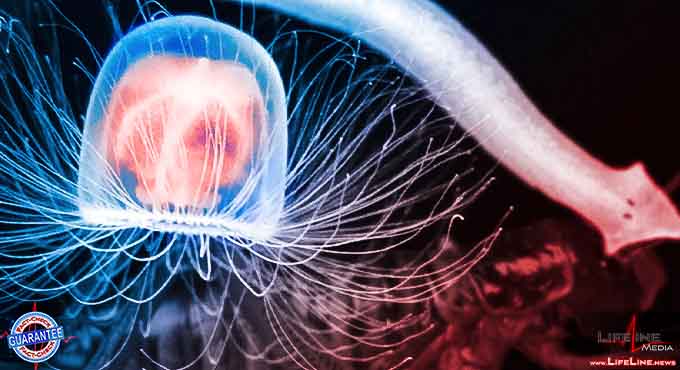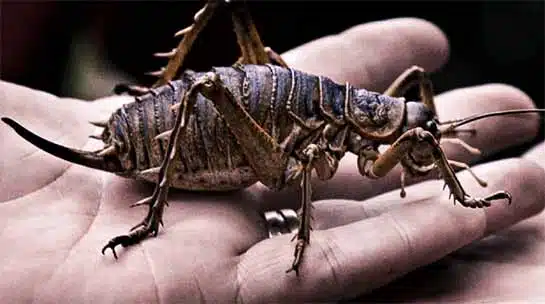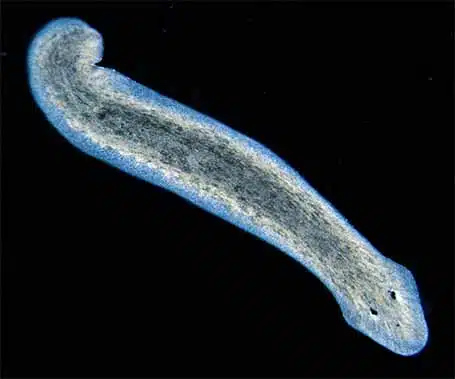
FACT-CHECK GUARANTEE
Political Tilt
& Emotional Tone
The article is politically unbiased as it focuses on scientific facts and research about animal lifespans and does not discuss or favor any political ideology or party.
Generated using artificial intelligence.
The emotional tone is neutral as it presents information in an objective and factual manner without expressing any particular emotion.
Generated using artificial intelligence.
Updated:
Read
| By Richard Ahern — Immortality is less far-fetched than most would think; while several animals are known to have lifespans over 100 years, only a select few can truly live forever.
Lifespans vary widely from species to species. While the average for humans in developed countries is approximately 80 years old, insects like the Mayfly live for just 24 hours, while animals like the giant tortoise have been known to reach over 200 years old.
But immortality is unique and only found in these few species.
1 Tree wētā — giant crickets

Tree wētā are giant flightless crickets belonging to the family Anostostomatidae of insects. A species endemic to New Zealand, these crickets are some of the heaviest insects in the world. Commonly found in forests and suburban gardens, these creatures are significant in studies of ecology and evolution.
Up to 40mm (1.6in) long and weighing 3-7g (0.1-0.25oz), tree wētā thrives in holes within trees, maintained by them and known as galleries. Wetas are often found in groups, typically with one male to around ten females.
They are nocturnal creatures, hiding during the day and feeding on leaves, flowers, fruit, and small insects at night. When young, weta will shed their exoskeletons eight times over two years until they reach adult size.
Here’s the astonishing part…
These insects exhibit extraordinary resilience to freezing, thanks to special proteins in their blood. Even if their hearts and brains freeze, they can be “revived” when thawed out, showcasing an incredible survival mechanism.
Unless killed by predators, these insects can theoretically live forever.
2 The planarian worm

The key to immortality might lie in a worm.
That’s not science fiction — it’s a finding from researchers at The University of Nottingham. They made an astonishing discovery concerning a species of flatworm that could unlock secrets to human aging.
Research has found certain animals can regenerate an injury to a specific body part, such as the liver in humans and the heart in zebrafish, but this animal can restore its entire body.
Meet the planarian worms.
These flatworms have stumped scientists for years with their seemingly endless ability to regenerate any missing body region. These worms can grow new muscles, skin, guts, and even brains over and over again.
These immortal creatures don’t age like we do. Dr. Aziz Aboobaker from the University of Nottingham’s School of Biology explained that these worms can avoid aging and keep their cells dividing. They’re potentially immortal.
The secret lies in the telomeres…
Telomeres are protective “caps” at the end of our chromosomes. Think of them as the ends on a shoelace — they prevent the strands from fraying.
Each time a cell divides, these telomeres get shorter. Eventually, the cell loses its ability to renew and divide. Immortal animals like the planarian worms must keep their telomeres from shortening.
Here’s the breakthrough…
Dr. Aboobaker predicted that planarian worms actively maintain the ends of their chromosomes in adult stem cells. This leads to what could be theoretical immortality.
This research wasn’t easy. The team conducted a series of rigorous experiments to unravel the worm’s immortality. They eventually discovered a clever molecular trick that enables cells to divide indefinitely without shortened chromosome ends.
In most organisms, an enzyme called telomerase is responsible for maintaining telomeres. But as we age, its activity decreases.
This study identified a possible planarian version of the gene coding for telomerase. They discovered that asexual worms significantly increase the activity of this gene when they regenerate, allowing stem cells to keep their telomeres.
Interestingly, sexually reproducing planarian worms don’t seem to maintain telomere length in the same manner as asexual ones. This discrepancy surprised the researchers, given both types have infinite regenerative capacities.
So, what does this mean?
The team hypothesizes that sexually reproductive worms might eventually show telomere-shortening effects or use an alternate mechanism.
These worms may hold secrets beyond their own immortality. Professor Douglas Kell, BBSRC Chief Executive, noted that this research significantly contributes to our understanding of aging processes. It could be the key to improving health and longevity in other organisms, including humans.
3 The immortal jellyfish

Turritopsis dohrnii, also known as the immortal jellyfish, has garnered attention for its extraordinary ability to revert to a sexually immature stage after reaching sexual maturity.
Found in temperate to tropical waters worldwide, it starts life as tiny larvae called planulae. These planulae give rise to polyps that form a colony attached to the sea floor, eventually budding off as jellyfish. These genetically identical clones form an extensively branched form, uncommon among most jellyfish.
As they grow, they become sexually mature and prey on other jellyfish species. When exposed to stress, sickness, or age, T. dohrnii can revert to the polyp stage through a process called transdifferentiation.
The incredible transdifferentiation process allows the cells to transform into new types, effectively making T. dohrnii biologically immortal. Theoretically, the process can continue indefinitely, though, in nature, predation or disease can still cause death without reverting to the polyp form. This phenomenon is not just limited to T. dohrnii — similar abilities are seen in the jellyfish Laodicea undulata and species of the genus Aurelia.
The potential immortality of T. dohrnii has catapulted this jellyfish into the spotlight for scientific study. Its unique biological capabilities have vast implications for research in fundamental biology, aging processes, and pharmaceutical applications.
Implications for human health and longevity
The research on these species has opened the door to understanding aging on a molecular level.
In simple terms, these animals might teach us how to be immortal — or at least how to alleviate aging and age-related characteristics in human cells.
Only time and further research will tell what these discoveries might mean for humanity. But one thing is for sure — these animals could redefine what we know about life and longevity.

Join the discussion!
Be the FIRST to comment on ‘3 IMMORTAL Animals That Offer Insights Into Human Aging’